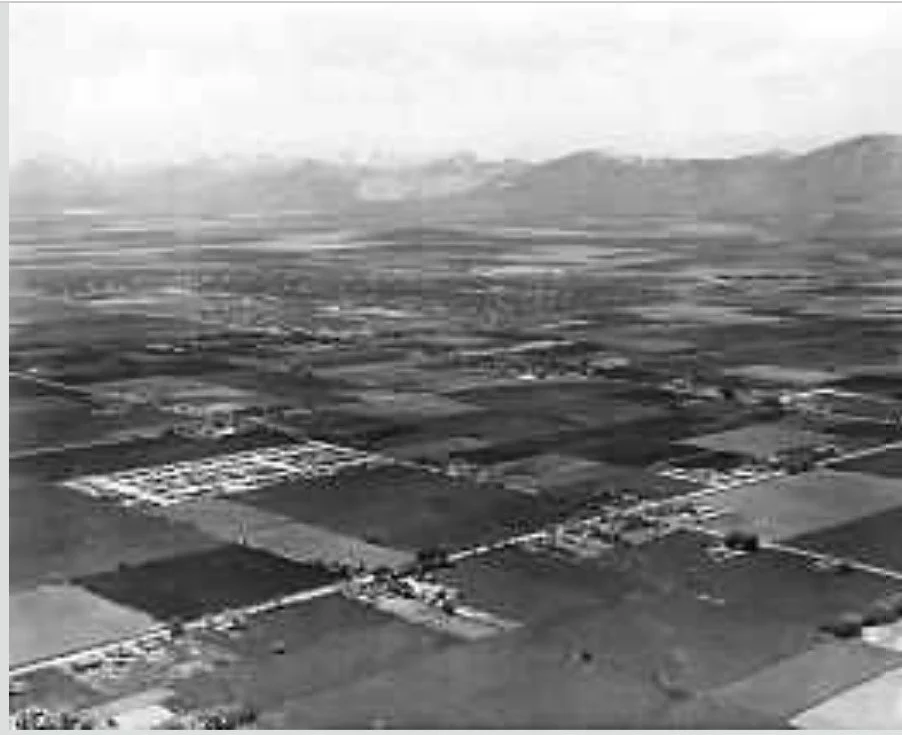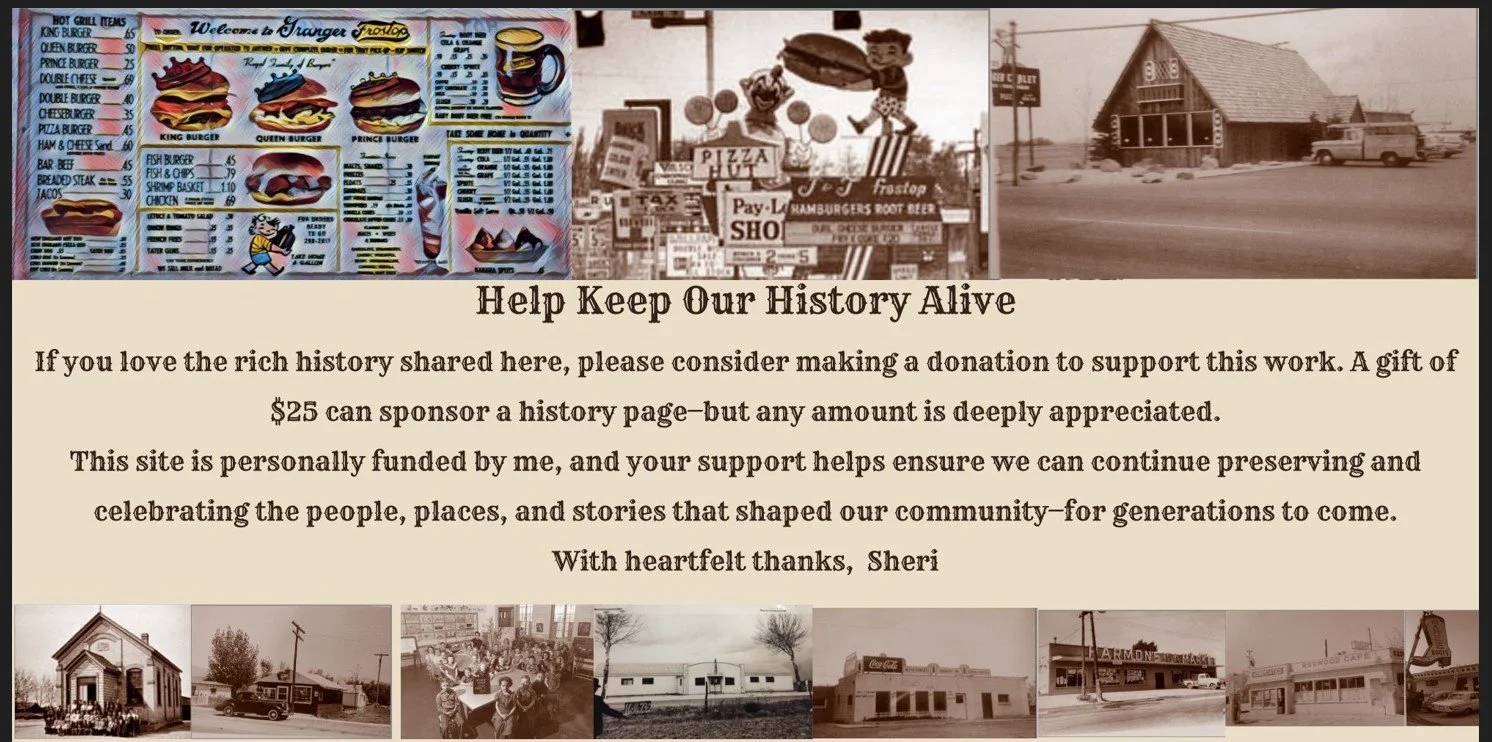Planning a Future: The Town Council That Shaped Granger-Hunter’s Identity
The Granger-Hunter Town Council: Building Civic Foundations in the Early 1960s
As the west side communities of Granger and Hunter grew rapidly in the postwar years, residents recognized a need for coordinated civic planning and stronger local representation. In response, the Granger-Hunter Town Council was officially formed in October 1960, marking a pivotal moment in the area’s journey toward incorporation and self-governance.
1960: A Council Is Born
Under the leadership of Aaron Dee Doxford, then a supervisor for Mountain States Telephone & Telegraph Co., the council was organized with nine dedicated members. Its first officers included:
Chairman: Aaron Dee Doxford, 6448 W. 3785 South
Vice Chairman: Jack D. Laird, 3179 Lemay Avenue
Secretary/Treasurer: Wallace Bawden, 4201 W. 3500 South
Committee assignments were structured to address essential areas of local need:
David D. Lingard – Civic Improvements
J. Leonard Harmon – Schools
Willard J. Jones – Recreation
Marcus L. Bennion – Public Safety
Harold V. Hymas – Publicity
Dr. Kenneth Hill – Health and Welfare
This inaugural group laid out ambitious goals, including plans for a Granger Post Office, a Fire Station, and a street lighting program aimed at improving safety throughout the growing suburban neighborhoods.
1961: Elections, Expansion, and Streetlight Safety
By September 1961, the council had expanded its reach and visibility. Vice Chairman Willard Jones announced upcoming elections for October 13, 1961, to be held at Granger High School. Voters would elect representatives from Hunter, North Granger, and South Granger.
Several incumbents, including Merrill Hymas and J. Leonard Harmon, declared their candidacy, while Chairman Jack Laird announced he would not seek re-election due to other commitments.
Vacancies left by David Lingard and Harold Hymas were filled by appointments: Wayne Cole and Robert Dobesh, both of whom were quickly integrated into the council’s working committees.
The updated 1961 Council roster included:
Chairman: Jack Laird
Vice Chairman: Willard Jones
Secretary/Treasurer: J. Leonard Harmon
Civic Improvements: Rulon Jenkins
Schools: Merrill Hymas
Recreation: George Fairbourne
Public Safety: Robert Dobesh
Health and Welfare: Dr. Kenneth Hill
Public Relations: Wayne Cole
The Street Lighting Campaign
Among the council’s most urgent initiatives in 1961 was the expansion of street lighting. With children attending schools like Granger Elementary, Monroe School, and Granger High on double sessions—often arriving and leaving in the dark—the need for safer streets became a pressing concern.
Led by Wayne Cole, the council actively encouraged residents to submit written reports of dangers such as theft, accidents, or other nighttime incidents that better lighting might prevent. These testimonies were intended to support the council’s case to county officials and help prioritize the installation of lighting in high-risk zones, especially near schools and intersections in subdivisions like Hillsdale.
Legacy and Long-Term Impact
The early 1960s Granger-Hunter Town Council was a cornerstone of community-driven progress. Its members—volunteers from local neighborhoods—worked without fanfare to lay the groundwork for the eventual incorporation of West Valley City in 1980. By coordinating with schools, advocating for safety, improving infrastructure, and encouraging civic participation, the council helped shape a more connected and livable community on Salt Lake County’s west side.
Granger-Hunter Town Council: Early 1960s Plans and Priorities
Developing a Master Plan for Growth
Collaborated with planning professionals to guide housing, commercial, and infrastructure development for the next 20–25 years.
Focused on balanced zoning for residential neighborhoods, schools, businesses, and public services.
Road Improvements & Street Planning
Addressed critical need for paved roads and traffic flow solutions due to rapid population increase.
Advocated for safer, better-connected streets throughout Granger and Hunter.
Sanitation and Sewer Expansion
Prioritized improved sewer systems to meet health codes and accommodate dense housing areas.
Worked with county and utility partners to extend lines and plan for future demand.
Water Supply Management
Coordinated with the Granger-Hunter Improvement District to ensure reliable water services and fire hydrant placement.
Addressed irrigation and culinary water needs for a fast-growing community.
Parks and Recreation Development
Supported initiatives (such as the Lions Club's calendar fundraiser) to fund upgrades at Granger Park and expand recreational amenities.
Advocated for open spaces as essential to community health and cohesion.
Public Safety and Fire Protection
Partnered with local fire and police services to improve emergency response.
Promoted neighborhood organization and safety planning.
Encouraging Civic Engagement
Held regular public meetings and invited local citizens to participate in decisions.
Collaborated with local organizations such as the Lions Club and Boy Scouts.
Laying Foundations for Incorporation
Though not yet pursuing full city status, the council’s structure and decisions prepared the area for future incorporation (which came in 1980 as West Valley City).
In April 1962, the Granger Town Council submitted a petition signed by over 1,000 residents to County Commissioner William G. Larsen, urging the installation of minimal street lighting throughout the Granger area. This initiative reflected the town’s growing concerns over public safety and the need for basic infrastructure as the community expanded. The large number of signatures underscored a united and proactive citizenry, committed to making Granger a safer and more livable place.


